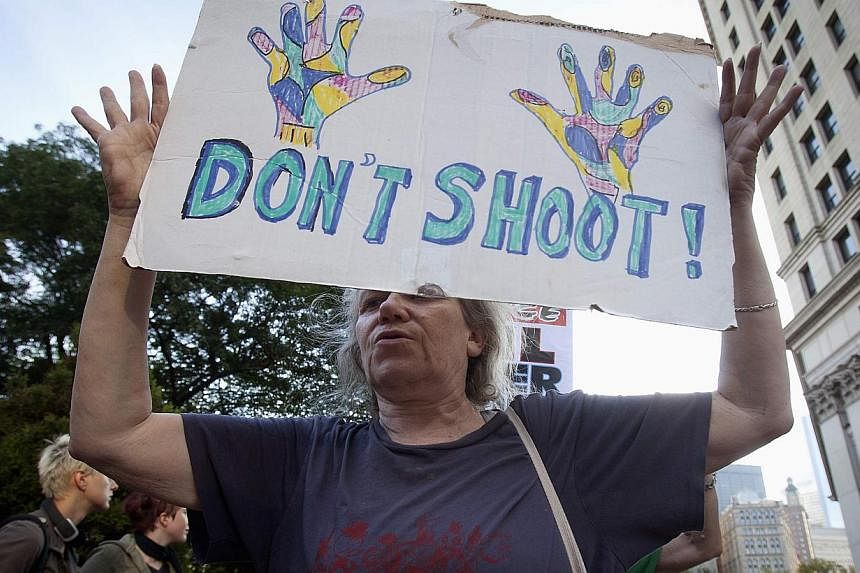Politics, wrote the political scientist Harold Lasswell in 1936, is about "who gets what, when, and how." If you want to understand the racial power disparities we've seen in Ferguson, Missouri, understand that it's not only about black and white. It's about green.
Back in 1876, the city of St Louis made a fateful decision. Tired of providing services to the outlying areas, the city cordoned itself off, separating from St Louis County. It's a decision the city came to regret. Most Rust Belt cities have bled population since the 1960s, but few have been as badly damaged as St Louis City, which since 1970 has lost almost as much of its population as Detroit.
This exodus has left a ring of mostly middle-class suburbs around an urban core plagued by entrenched poverty. White flight from the city mostly ended in the 1980s; since then, blacks have left the inner city for suburbs such as Ferguson in the area of St Louis County known as North County.
Ferguson's demographics have shifted rapidly: In 1990, it was 74 per cent white and 25 per cent black; in 2000, 52 per cent black and 45 per cent white; by 2010, 67 per cent black and 29 per cent white.
The region's fragmentation isn't limited to the odd case of a city shedding its county. St Louis County contains 90 municipalities, most with their own city hall and police force. Many rely on revenue generated from traffic tickets and related fines. According to a study by the St Louis non-profit Better Together, Ferguson receives nearly one quarter of its revenue from court fees; for some surrounding towns, it approaches 50 per cent.
Municipal reliance on revenue generated from traffic stops adds pressure to make more of them.
With a primarily white police force that relies disproportionately on traffic citation revenue, blacks are pulled over, cited and arrested in numbers far exceeding their population share, according to a recent report from Missouri's Attorney-General. In Ferguson last year, 86 per cent of stops, 92 per cent of searches and 93 per cent of arrests were of black people - despite the fact that police officers were far less likely to find contraband on black drivers (22 per cent versus 34 per cent of whites).
By contrast, consider the city: After decades of methodically building political power, blacks in St Louis City elected a black mayor in 1993 and black aldermen or alderwomen in nearly half the city's wards, and hold two of three seats on the powerful Board of Estimate and Apportionment, which must approve all city contracts. Well-established churches, Democratic ward organisations and other civic institutions mobilise voters in black wards. But because blacks have reached the suburbs in significant numbers only over the past 15 years or so, fewer suburban black communities have deeply ingrained civic organisations.
That helps explain why majority-black Ferguson has a virtually all-white power structure: a white mayor; a school board with six white members and one Hispanic, which recently suspended a highly regarded young black superintendent who then resigned; a City Council with just one black member; and a 6 per cent black police force.
Many North County towns - and inner-ring suburbs nationally - resemble Ferguson. Long-time white residents have consolidated power, continuing to dominate the city councils and school boards despite sweeping demographic change. They have retained control of patronage jobs and municipal contracts awarded to allies.
The North County Labor Club, whose overwhelmingly white constituent unions (plumbers, pipe fitters, electrical workers, sprinkler fitters) have benefited from these arrangements, operates a potent voter-turnout operation that backs white candidates over black upstarts. The more municipal contracts an organisation receives, the more generously it can fund re-election campaigns. Construction, waste and other long-term contracts with private firms have traditionally excluded blacks from the ownership side and, usually, the workforce as well.
But there's a potential solution that could help Ferguson reinvest in itself and also help African-Americans compete for a bigger share of the pie: consolidation with surrounding municipalities, many of which face similar challenges. The St Louis region has seen some preliminary support for the idea, with resistance concentrated in smaller political units whose leaders are loath to surrender control.
Consolidation would help strapped North County communities avoid using such a high percentage of their resources for expensive public safety overheads, such as firetrucks. It could also empower the black citizens of Ferguson. Blacks incrementally gained power in St Louis City in part because its size facilitates broader coalitions and alliances. Another benefit of consolidation is the increased political talent pool. Many leaders just aren't interested in running a tiny municipality.
In shrinking cities, politics is often a nasty, zero-sum game. But consolidation could create economies of scale, increase borrowing capacity to expand economic opportunity, reduce economic pressures that inflame racial tension, and smash up the old boys' network that has long ruled much of North County.
When the state patrol and the national television cameras leave Ferguson, its residents will still be talking about how they can move forward. And they may be ready to expand the conversation so that it's not just about black and white, but green.
NEW YORK TIMES

